*EXCLUSIVE* New Guinea (Hubika) - Huon Peninsula Campaign - 8th Photo Squadron Aerial Reconnaissance Map

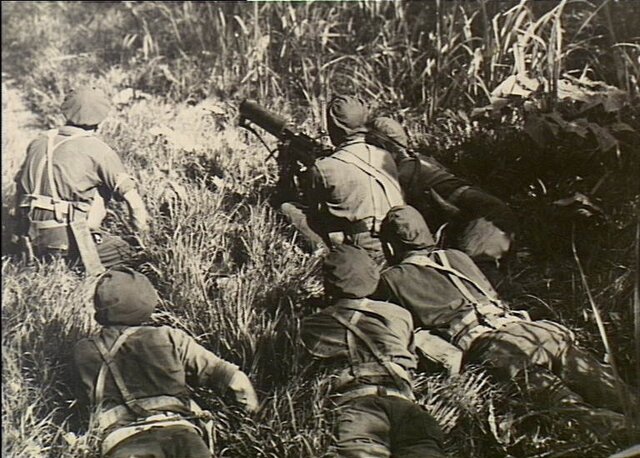






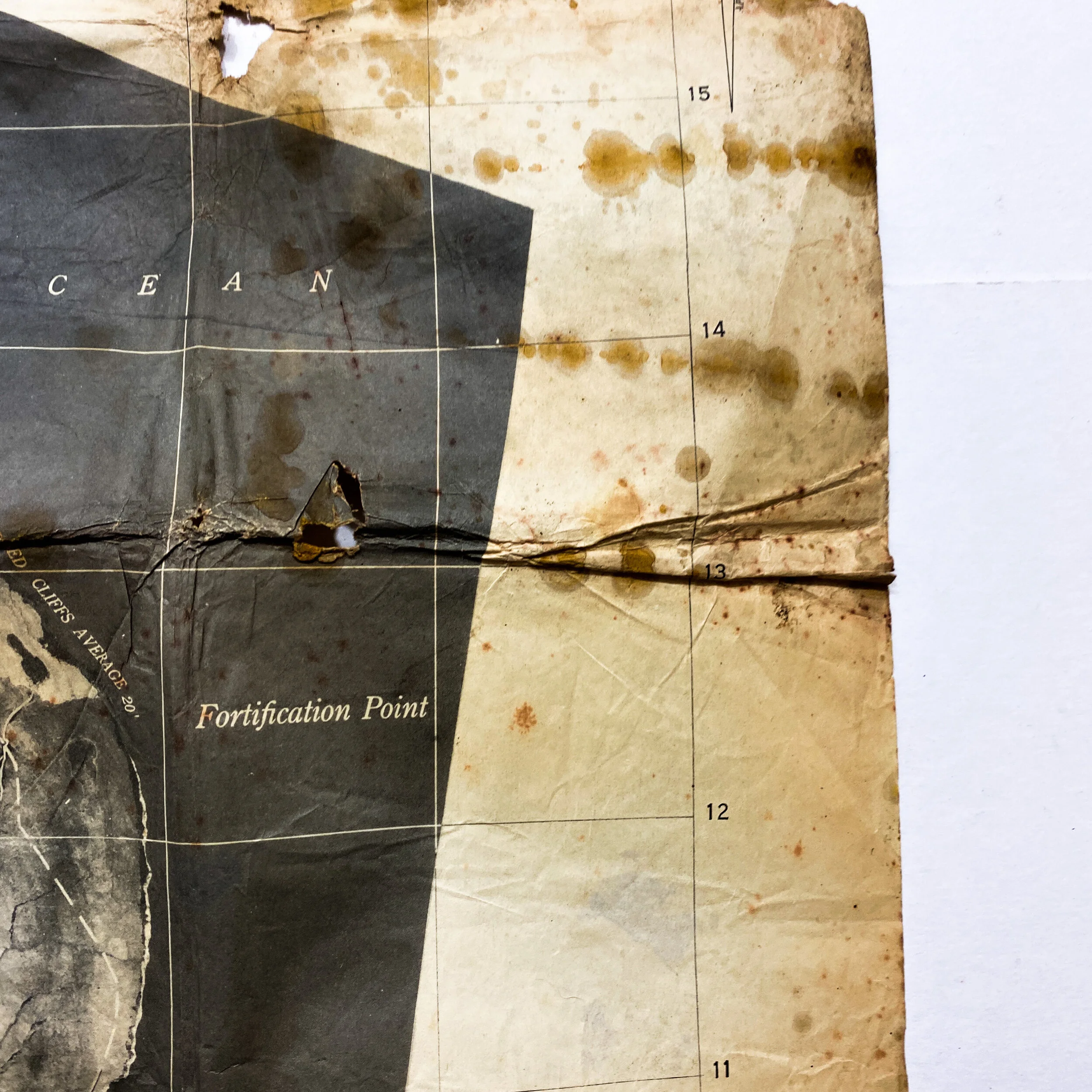

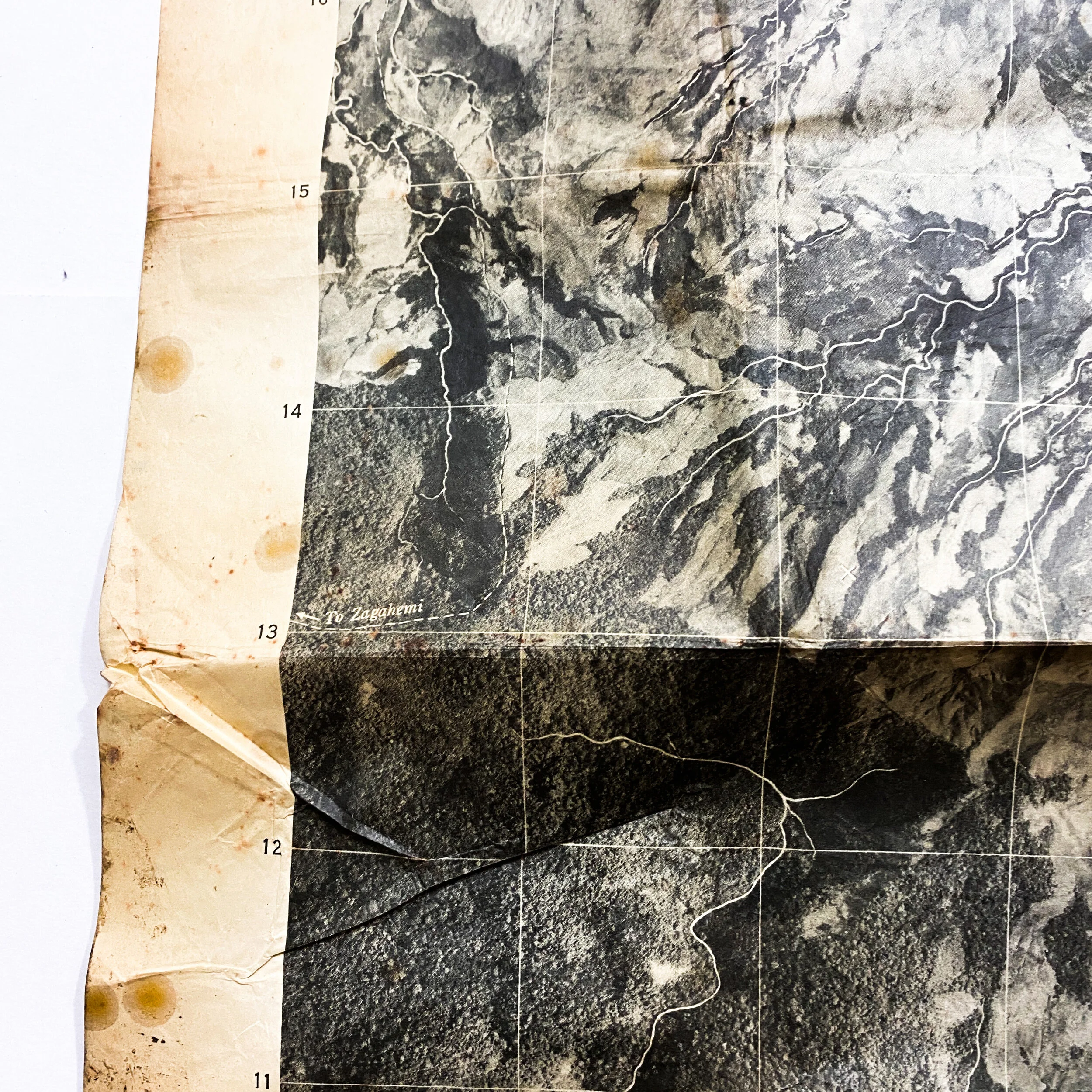
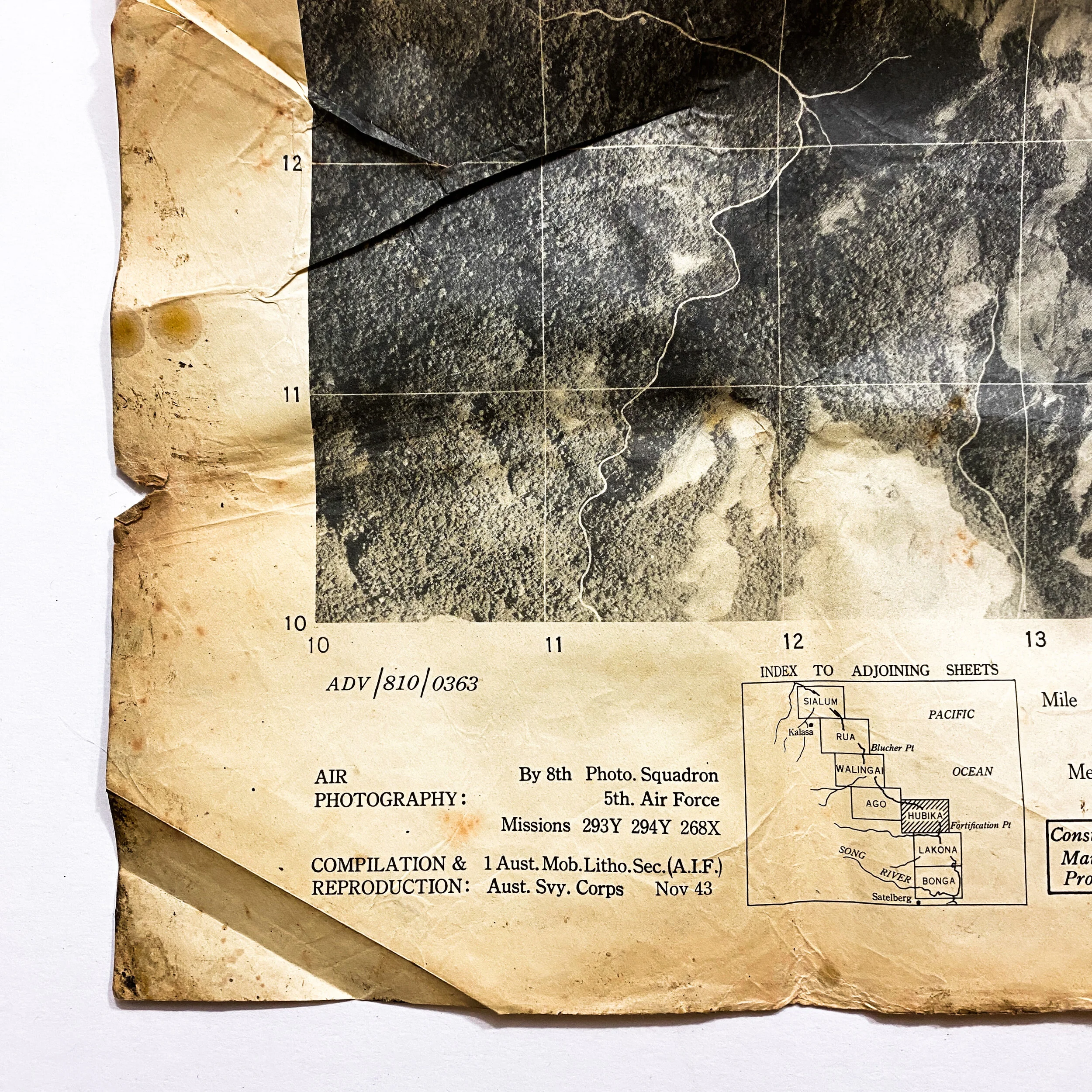


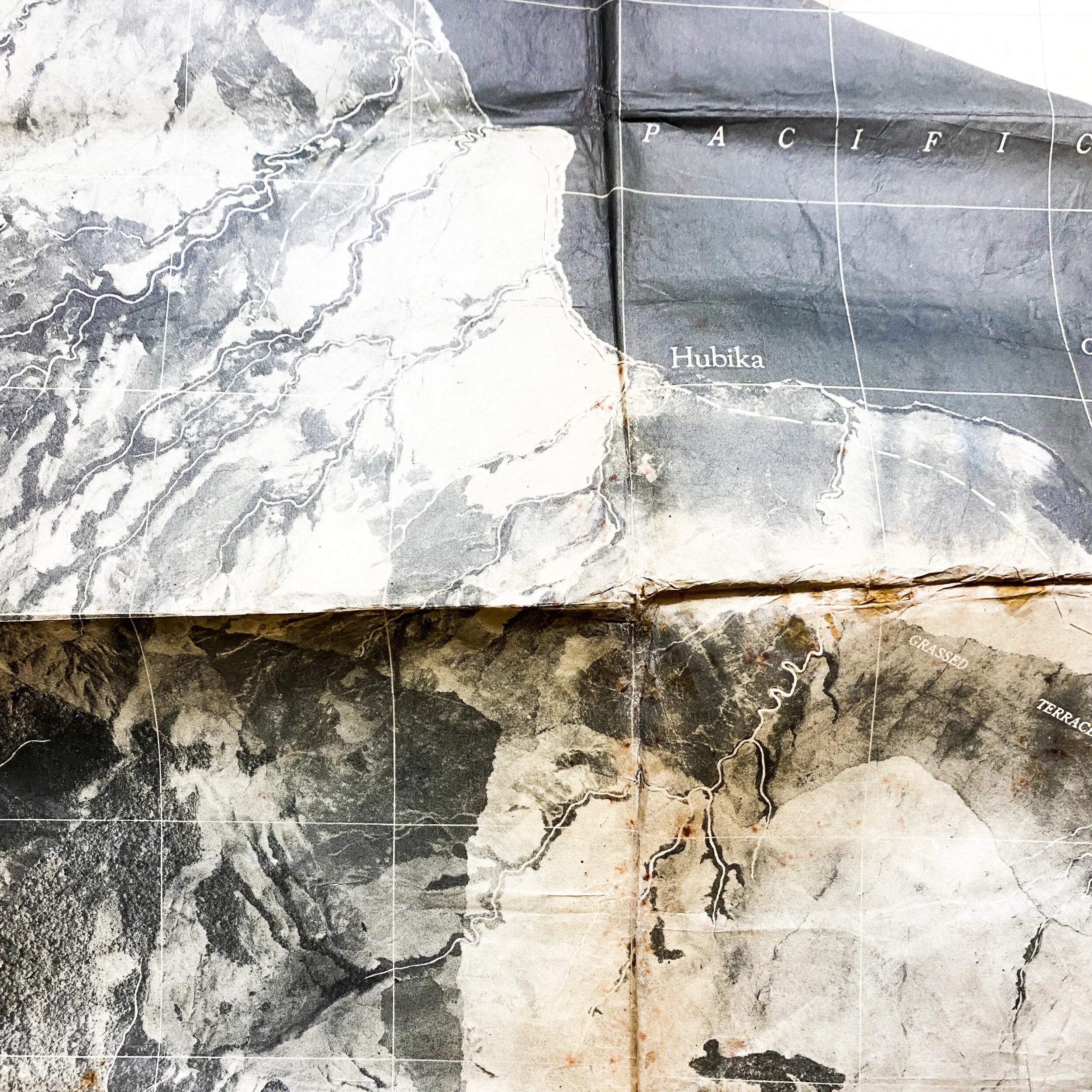




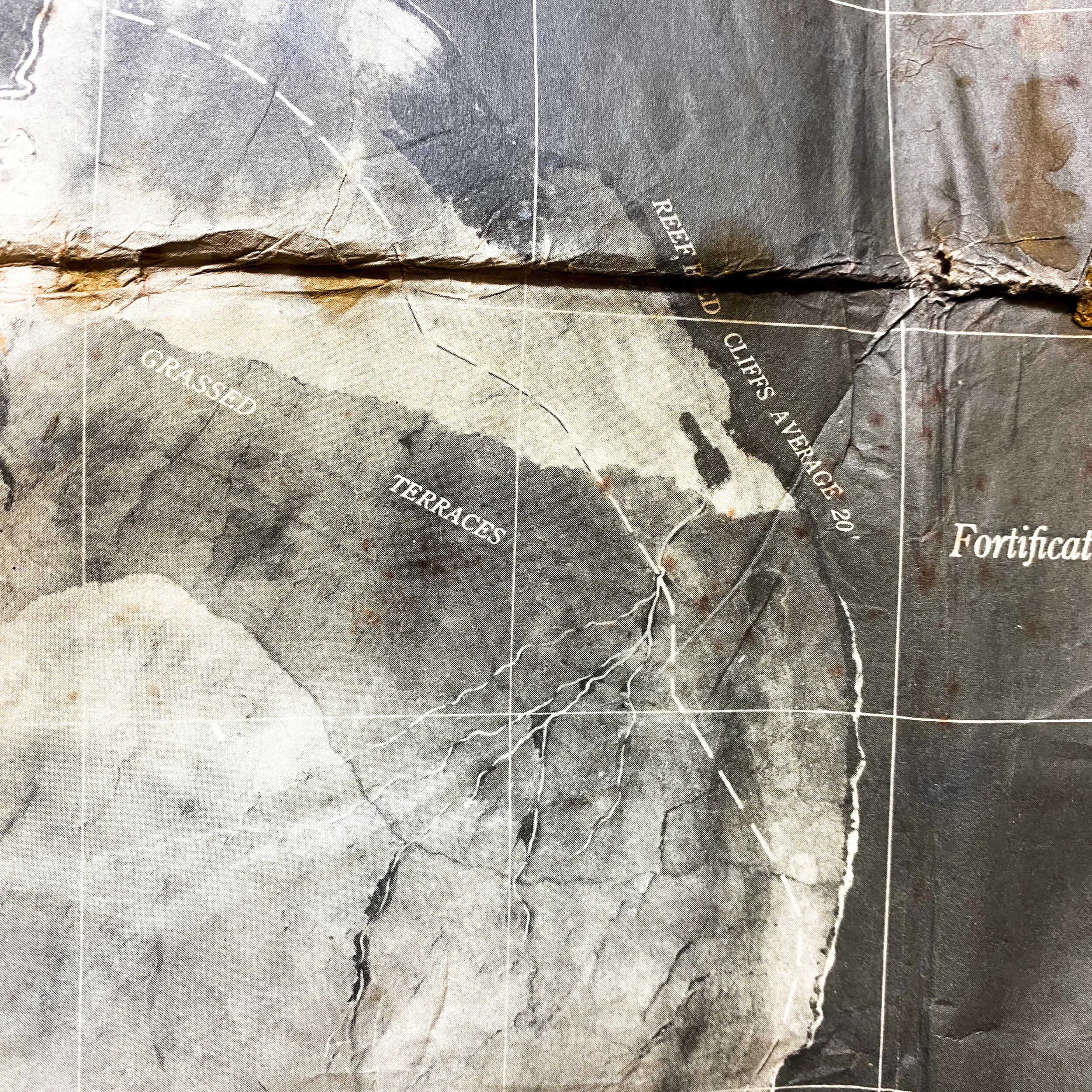

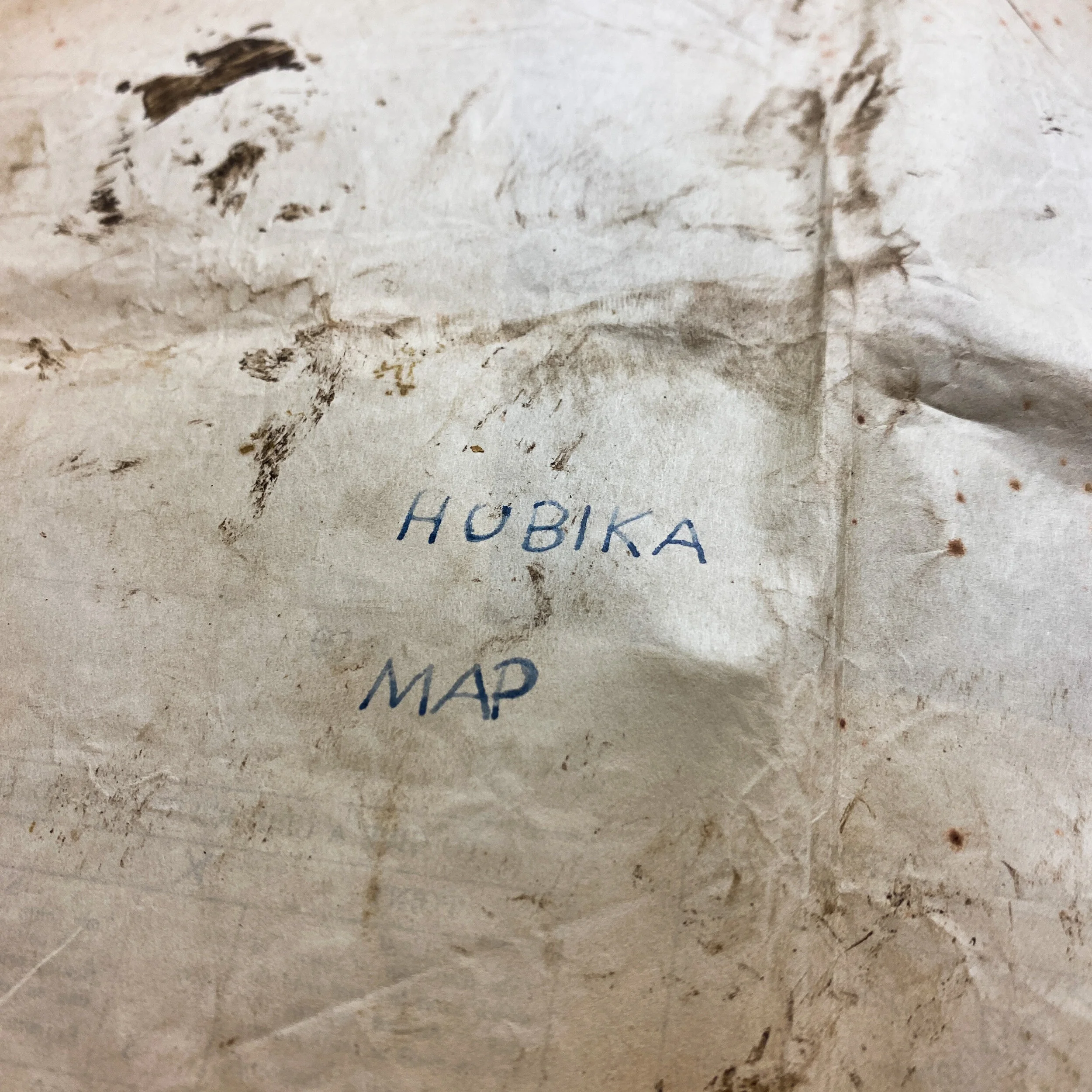
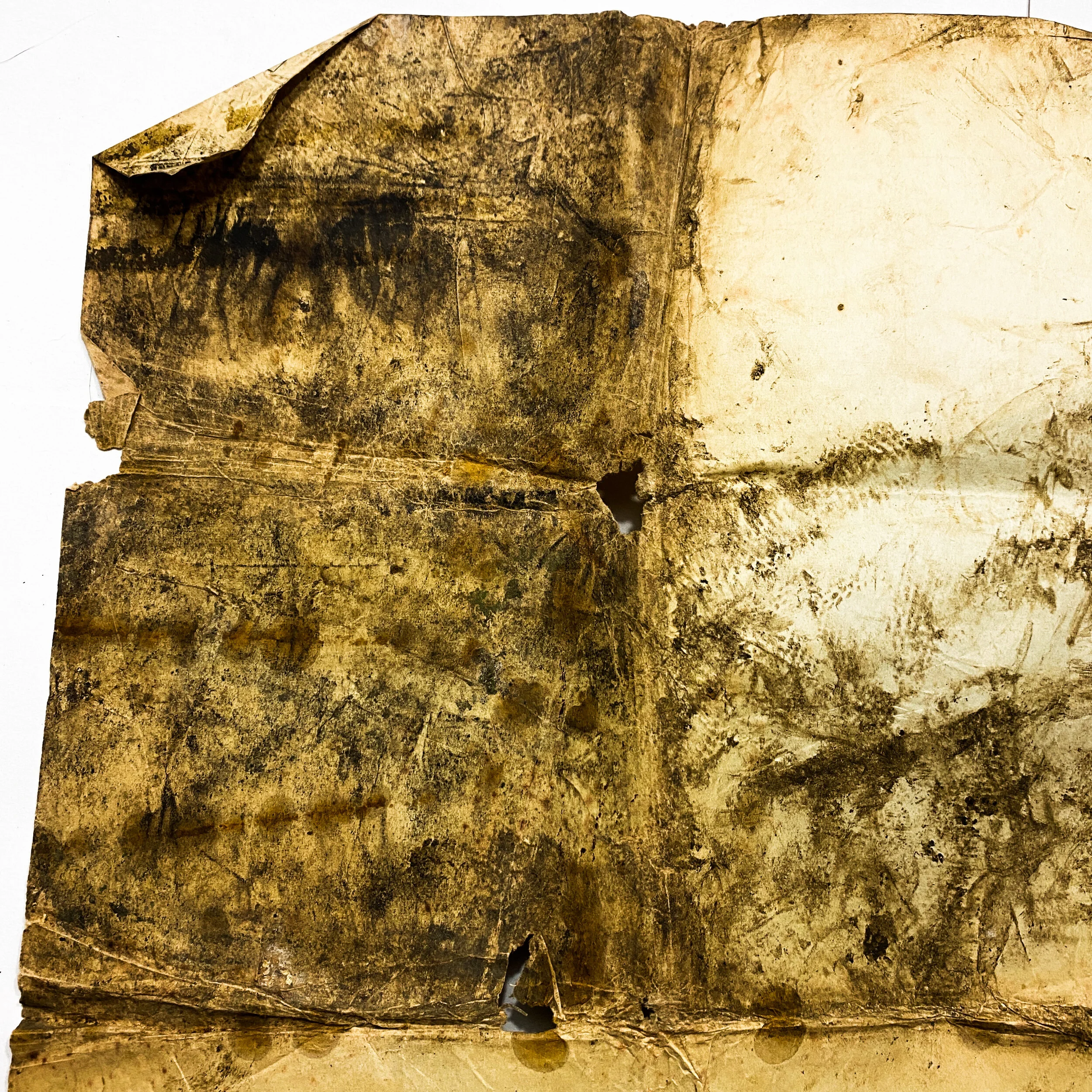
*EXCLUSIVE* New Guinea (Hubika) - Huon Peninsula Campaign - 8th Photo Squadron Aerial Reconnaissance Map
Museum Grade WWII New Guinea (Pacific Theater) Artifact:
*This map features a huge section of the infamous ‘Fortification Point’ where The Battle of Sio, fought between December 1943 and March 1944 took place. This location was the break-out and pursuit phase of General Douglas MacArthur's Huon Peninsula campaign, part of the New Guinea campaign of World War II.
Size: 22.5 x 17.75 inches
This is an extremely rare and salty aerial reconnaissance map of the once Japanese held island of New Guinea. This reconnaissance map shows a full gridded and air map of the Hubika and was taken by the 8th Photo Squadron - 5th Air Force. This map took 3 missions to fly over and complete the map. These missions are denoted and marked in the lower left as missions 293Y, 294Y, and 268X. The map is a compilation of the 1st Australian Mob. Litho. Sec. (AIF) and the Australian Survey Corps. being dated November of 1943. The map has both miles and meter mark conversions for distance marking as well as notations for 'constructed roads, main tracks, and probable tracks of the Japanese. The map features some of the most infamous section of the Huon Peninsula campaign and shows Wandokai, the “cliffs”, Hubika, and Fortification Point.
Hubika:
The 4th Brigade suffered 65 killed and 136 wounded on top of rising casualties from disease and was replaced by the 20th Brigade at this point. The 26th Brigade took over flank protection duties inland.The advance then rolled quickly as Japanese morale broke and organized resistance diminished. Large gains were made against only limited resistance, which often amounted to minor skirmishes against small groups of Japanese. Hubika fell on 22 December with no opposition, and Wandokai two days later. Blucher Point was reached on 28 December, where the 2/13th Infantry Battalion regained contact with the retreating Japanese and fought a sharp contact. Elsewhere, on 26 December US and Australian forces landed on Long Island, while US forces landed further west at Saidor on 28 December.
Fortification Point:
4th Infantry Brigade advance to Fortification Point, 5–20 December 1943. Wootten designated Brigadier C. R. V. Edgar's 4th Infantry Brigade, a Militia formation, for the initial phase of the coastal advance, reserving his veteran Australian Imperial Force brigades for the Battle of Wareo. The brigade consisted of the 22nd and 29th/46th Infantry Battalions from Victoria and the 37th/52nd Infantry Battalion from Tasmania. Each battalion was allotted a team of advisors from the 9th Division. Under Edgar's command was C Squadron, 1st Tank Battalion, with seven Matilda tanks, 9th Platoon, C Company, Papuan Infantry Battalion, and detachments from the 532nd EBSR, Australian New Guinea Administrative Unit (ANGAU), Australian Army Service Corps (AASC) and Australian Army Medical Corps (AAMC). In support were the sappers of the 2/7th Field Company and the 24 25-pounders of the 2/6th Field Regiment. In case Edgar got into trouble, the 20th Infantry Brigade was in reserve, on six hours notice.
To support the advance, a beach maintenance area was prepared at a beach at the mouth of the Kalueng River, which involved removing underwater and landward obstacles. So that the tanks and jeeps could immediately support the advance, a bridge was required over the Kalueng River. A preliminary operation by the 22nd Infantry Battalion on 3 December 1943 secured a crossing area and a log bridge was constructed. The operation jumped off on 5 December, with the 29th/46th Infantry Battalion passing through the bridgehead established by the 22nd. It soon came under sporadic enemy fire, and a tank was disabled by a land mine. In the face of mounting opposition, the advance was halted near the lagoon. It resumed the next day, and the Japanese withdrew after an artillery bombardment, their orders being "while avoiding any decisive engagement" to "carry out successful resistance to try to delay the enemy advance". This became the pattern, with the Japanese preferring to withdraw rather than suffer heavy casualties. On 10 December, Edgar brought all three of his battalions into the line and by 14 December they were closing in on Lakona, a key position on the 20th Division's retreat route.
The tanks had difficulty keeping up with the advance. One obstacle was mines. On the first day, the 2/7th Field Company lifted fourteen mines but a tractor broke a track running over a mine. On 7 December, two more tanks were damaged by mines, one beyond repair. The sappers then cut a new track which they corduroyed. To support the attack on Lakona, the tanks had to cross a creek with steep coral banks, swollen by a torrential downpour. While efforts were made to bring up a compressor, tanks fired into banks and holes were packed with explosives and detonated. On the evening of 16 December, the infantry were joined by five Matilda tanks and overran the Japanese positions. They counted 47 Japanese dead; and killed another 17 in mopping-up operations the next day. On 20 December, aided by four Matilda tanks and 750 rounds from the 25-pounders, the 4th Infantry Brigade occupied the Fortification Point area. Between 5 and 20 December, the 4th Infantry Brigade reported 65 killed and 136 wounded.[28] Japanese casualties were 420 killed and 136 found dead, victims of disease, malnutrition, and suicide. Only six Japanese prisoners were taken.
Huon Peninsula Campaign:
The Huon Peninsula campaign was a series of battles fought in north-eastern Papua New Guinea in 1943–1944 during the Second World War. The campaign formed the initial part of an offensive that the Allies launched in the Pacific in late 1943 and resulted in the Japanese being pushed north from Lae to Sio on the northern coast of New Guinea over the course of a four-month period. For the Australians, a significant advantage was gained through the technological edge that Allied industry had achieved over the Japanese by this phase of the war, while the Japanese were hampered by a lack of supplies and reinforcements due to Allied interdiction efforts at sea and in the air.
The campaign was preceded by an amphibious landing by troops from the Australian 9th Division east of Lae on 4 September 1943. This was followed by an advance west along the coast towards the town where they were to link up with 7th Division advancing from Nadzab. Meanwhile, Australian and US forces mounted diversionary attacks around Salamaua. Heavy rain and flooding slowed the 9th Division's advance, which had to cross several rivers along the way. The Japanese rear guard also put up a stiff defense and, as a result, Lae did not fall until 16 September, when troops from the 7th Division entered it ahead of the 9th, and the main body of the Japanese force escaped north. Less than a week later, the Huon Peninsula campaign was opened as the Australians undertook another amphibious landing further east, aimed at capturing Finschhafen.
Following the landing at Scarlet Beach, the Allies set about moving south to secure Finschhafen, which saw fighting around Jivevaneng also. In mid-October, the Japanese launched a counterattack against the Australian beachhead around Scarlet Beach, which lasted for about a week and resulted in a small contraction of the Australian lines and a splitting of their force before it was defeated. After this, the Australians regained the initiative and began to pursue the Japanese who withdrew inland towards the high ground around Sattelberg. Amidst heavy fighting and a second failed Japanese counterattack, Sattelberg was secured in late November and the Australians began an area advance to the north to secure a line between Wareo and Gusika. This was completed by early December, and was followed by an advance by Australian forces along the coast through Lakona to Fortification Point, overcoming strong Japanese forces fighting delaying actions.
The final stage of the campaign saw the Japanese resistance finally break. A swift advance by the Australians along the northern coast of the peninsula followed and in January 1944 they captured Sio. At the same time, the Americans landed at Saidor. After this, mopping up operations were undertaken by Allied forces around Sio until March and Madang was captured in April. A lull period then followed in northern New Guinea until July when US forces clashed with the Japanese around the Driniumor River. This was followed by further fighting in November 1944 when the Australians opened a fresh campaign in Aitape–Wewak.